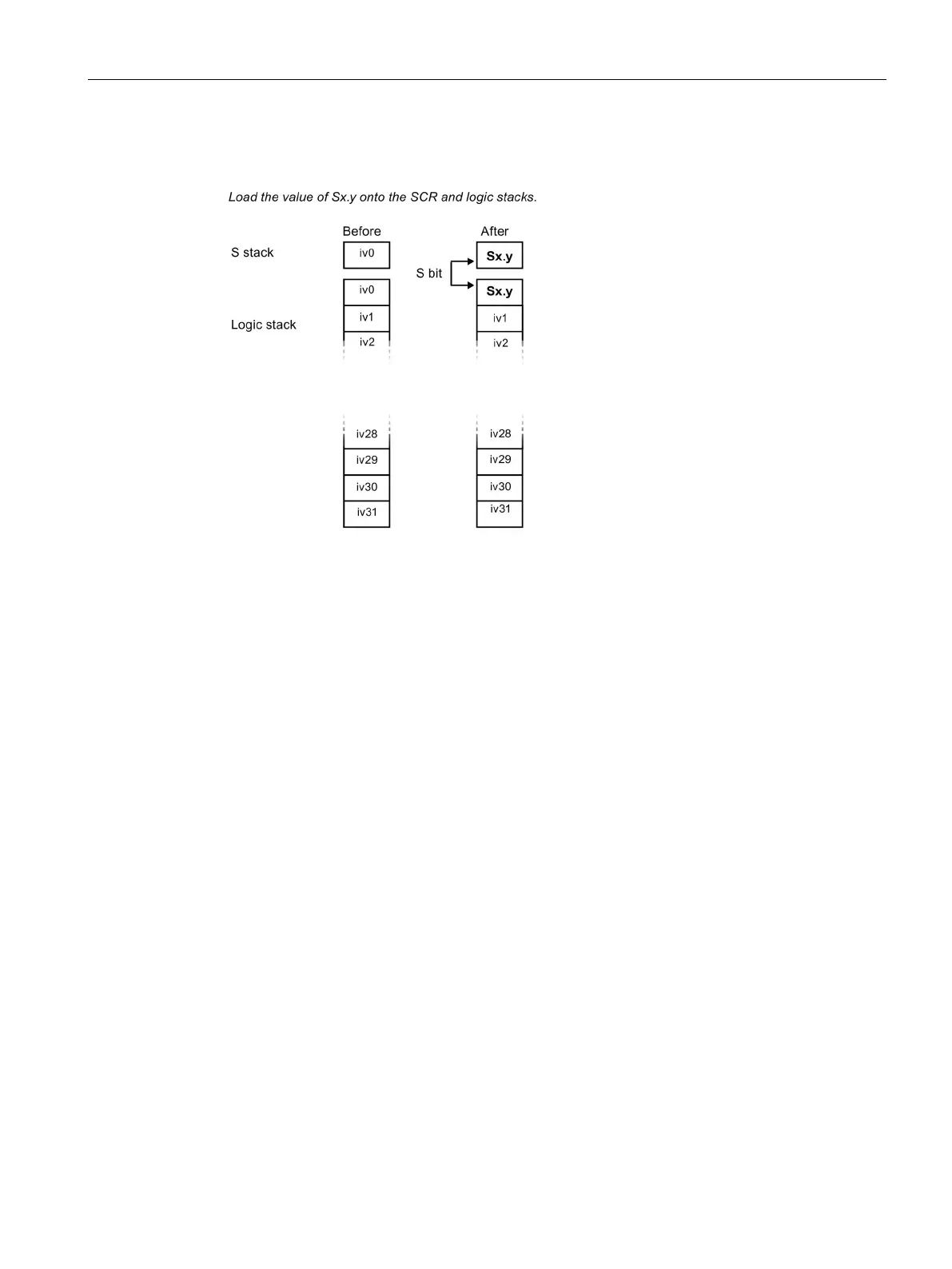Program instructions
7.13 Program control
S7-200 SMART
System Manual, 09/2015, A5E03822230-AC
305
S stack and logic stack interaction
The figure shows the S stack and the logic
stack and the effect of executing the
Load
SCR instruction.
Controlling program flow with SCR segments
The main program consists of instructions that execute sequentially once per scan of the
PLC. For many applications, it may be appropriate to logically divide the main program into a
series of operational steps that mirror steps within a controlled process (for example, a
series of machine operations).
One way to logically divide a program into multiple steps is to use SCR segments. SCR
segments can divide your program into a single stream of sequential steps, or into multiple
streams that can be active simultaneously. It is possible to have a single stream conditionally
diverge into multiple streams, and to have multiple streams conditionally re-converge into a
single stream.

